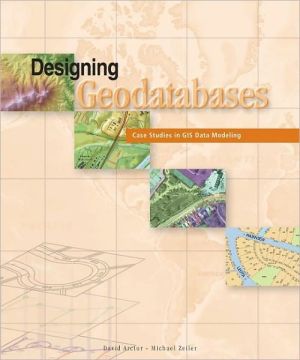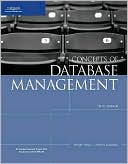Designing Geodatabases: Case Studies in GIS Data Modeling
This guide to creating a dynamic GIS data model helps database managers design a schema that has comprehensive and descriptive query definitions, a user-friendly cartographic display, and increased performance standards. The five steps for taking a data model through its conceptual, logical, and physical phases, including modeling the user's view, defining objects and relationships, selecting geographic representations, matching geodatabase elements, and organizing the geodatabase structure...
Search in google:
This guide to creating a dynamic GIS data model helps database managers design a schema that has comprehensive and descriptive query definitions, a user-friendly cartographic display, and increased performance standards. The five steps for taking a data model through its conceptual, logical, and physical phases, including modeling the user's view, defining objects and relationships, selecting geographic representations, matching geodatabase elements, and organizing the geodatabase structure are studied in detail. A look at nine decision points that deal with concerns common to all data modeling exercises, such as validating feature geometries, modeling linear networks, managing raster data, and labeling map features help database managers fine-tune their GIS data models. Several design models for a variety of applications are considered including addresses and locations, census units and boundaries, stream and river networks, and topography and the base map.
Companion Web site for ArcGIS data modelsCh. 1Geodatabase design2Ch. 2Streams and river networks36Ch. 3Census units and boundaries86Ch. 4Addresses and locations126Ch. 5Parcels and the cadastre166Ch. 6Surveying federal lands220Ch. 7Using raster data280Ch. 8Cartography and the base map306Ch. 9Building geodatabases374








